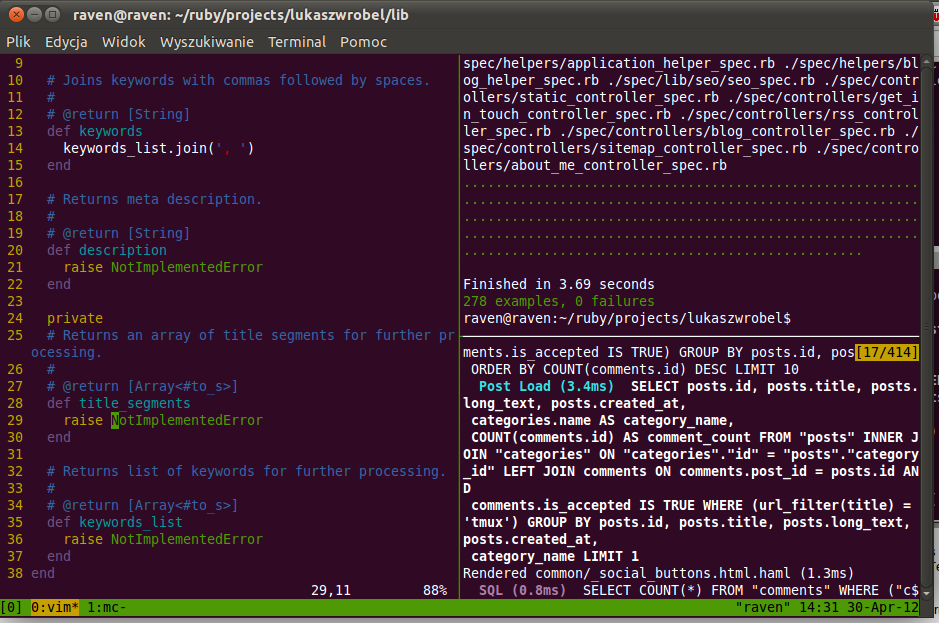

#Tmux windows windows#
I used to think that move window only let you set a new order number for your window, but I have since learned that you can pass windows between sessions fairly easily using the : syntax. is move window, and tmux- lets you jump around your first ten windows. By default, tmux-, is rename window, tmux. You can refer to them in tmux by name or number, which is kind of handy. They live in the bar at the bottom of the screen, ordered by their sort number. Windows in tmux have a name, and a sort number.

Super simple, every time I need a new session now I simply tmux-: to get the tmux console, type :new, then cd to the folder I need, and run tspace to name it after the project and set the folder defaults. I got tired of doing this every time I made a context switch, so I wrote a little script to do this for me. This last command means that any split or new window inside that session opens in your current folder, which is handy for making a split so you can run a rake task or a script console for your rails project. You can switch between sessions using tmux-s, rename them using tmux-$, and set their default folder by running tmux set default-folder $(pwd) inside the session. sessionsīecause I tend to isolate projects to a single session, allowing me to have a complete context switch when needed, I tend to name them the project I am working on, and force their default folder to the project folder. Never forget that you always have access to your current shortcuts by typing tmux-?. When I refer to starting the tmux console, I mean keying in tmux. My tmux config can be found here, and there are some other theme settings here. For the course of this article, I will use tmux+ to avoid confusion when describing tmux shortcuts. I recently have been digging into some of the neater features in tmux's layout system, and here's what I've come up with to help me work harder better faster stronger.Ī couple notes: I have set the tmux key to be ctrl-g, but you can use whatever you want. Windows and panes I use as is convenient. I use sessions to separate workspaces, almost like the spaces in osx. Windows and panes are to a certain degree interchangeable as we will see, but sessions are fairly immutable. Sessions are groups of windows, and a window is a layout of panes. You can re-attach to these background sessions with tmux a -t where session is a name number.Tmux has three levels of hierarchy when it comes to organizing views: Sessions, windows, and panes. If you run tmux ls you'll see that with C-x d the session is still running in the background. This shortcut kills the window but not the current session unless your are in the last open window. You can close the current window with: C-x (Your prefix Ctrl+a in the case of the OP, Ctrl+b by default) nf: bind C-x confirm-before -p "kill other windows? (y/n)" "kill-window -a"īind Q confirm-before -p "kill-session #S? (y/n)" kill-session If you'd like a custom kill session keybind suggests these additions to your. Kill-server kills all sessions not merely the current one This way there is no need to type a command at the prompt (accessed with C-x :) One way is C-x : to get the tmux prompt and kill-sessionĪs pointed out C-x w gives you an interface to select windows across multiple sessions which you can select with the arrow keys and t to toggle the tagged status then X to kill the tagged windows and y to confirm this action.

Unfortunately there does not appear to be a simple default keybind to do this, possibly because it's an action you might want to be careful about though this could be addressed with a confirm dialogue.


 0 kommentar(er)
0 kommentar(er)
